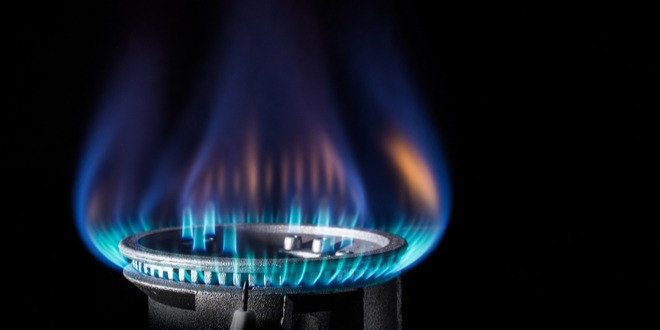Natural gas prices held in a narrow range Wednesday, flipping between modest gains and losses as traders balanced global supply worries amid the war in Ukraine against the prospect of fading domestic demand.
The April Nymex gas futures contract ultimately shed a tenth of a cent day/day and closed at $4.526/MMBtu. May dipped two tenths of a cent to $4.561. It marked the third consecutive day of declines. NGI’s Spot Gas National Avg. shed 7.5 cents to $4.445.
The outlook for the next two weeks is easily warmer than normal, in stark contrast to the forecasts seen for the middle of the month just a week ago.
The weather change is the primary bearish factor over the last few days, thanks to mid-month colder potential completely vanishing. Last week, futures jumped 12% on expectations for more cold and escalating concerns about Russia’s invasion of Ukraine.
The war fueled surges in global oil and European natural gas prices, due to worries that Russian crude and gas supplies to Europe could be interrupted amid the cold of winter.
US supplies are sufficient for domestic needs, and the market is headed into the spring shoulder season, when heating demand is all but certain to taper quickly.
The market is now looking ahead to the end of the winter season. Forecasts point to comfortably above normal temperatures. Markets remain vulnerable to price swings until there is material de-escalation in Ukraine.
The potential for Europe to follow President Biden’s lead and ban imports of Russian oil and natural gas is a question that traders seek certain answers for. Biden made the move Tuesday, sending global oil prices to new 2022 highs.
The geopolitical risk premium in oil prices continues to provide bullish support to gas. The US ban on Russian energy imports is largely seen as symbolic, given their limited dependence compared to Europe, but nevertheless shows that energy sanctions remain on the table and could be deployed if the war escalates further.
Demand for US liquefied natural gas has proven robust amid the war, with feed gas volumes hovering around 13 Bcf and near capacity
While the demand could provide price support, there is little room for the United States to increase exports further. Not only that, but there is also approaching maintenance season for LNG facilities, lowering the effective export capacity,” they added.
Additionally, losses in thermal efficiency that occur in the summer at liquefaction trains will further reduce the ability to export at maximum capacity.
Looking ahead to Thursday’s Energy Information Administration (EIA) storage report, expectations Wednesday were pointing to a tighter-than-average, triple-digit withdrawal for the week ended March 4.
While forecasts point to warmth later in the month, frosty temperatures have permeated parts of Lower 48 so far in March, requiring utilities to pull hefty amounts of gas from storage to meet heating demand.
At the same time, the steady calls for American LNG kept the levels of super-chilled fuel flowing to export facilities at elevated levels during the covered period.
Estimates submitted to Bloomberg showed a median prediction for a 118 Bcf decrease for last week. Withdrawal predictions ranged from 108 Bcf to 141 Bcf. Reuters’ poll found estimates ranging from withdrawals of 91 Bcf to 128 Bcf, with a median estimate of 120 Bcf.
The five-year average for the period is a pull of 89 Bcf, while the year-earlier period saw a 59 Bcf decrease, EIA data show.
EIA reported a withdrawal of 139 Bcf for the week ended Feb. 25, lowering inventories to 1,643 Bcf. That compared with the year-earlier level of 1,859 Bcf and the five-year average of 1,898 Bcf.
Spot gas prices descended for a second straight day even as heating needs were expected to remain elevated in the near term. Demand was steady across the Midwest as a weather system tracked across the region, delivering chilly rains and freezing temperatures, according to National Weather Service (NWS) data.
Another blast of winter with the potential for subzero lows is forecast for the Upper Midwest late in the trading week, and should that cold front push East as expected, it could usher in lows in the teens and 20s to the Northeast by the weekend.
National demand is likely to prove light next week as mild weather settles across the northern United States, with seasonally warm highs ranging from the 40s to the 60s. The southern half of the country, meanwhile, is expected to see highs from the 60s to 80s.

 Noor Trends News, Technical Analysis, Educational Tools and Recommendations
Noor Trends News, Technical Analysis, Educational Tools and Recommendations




